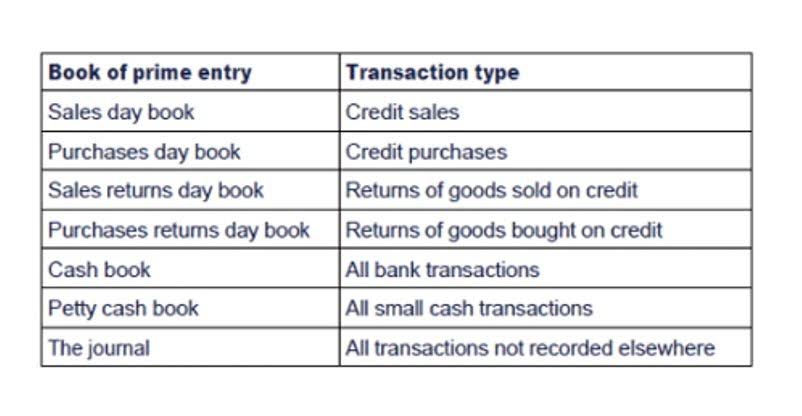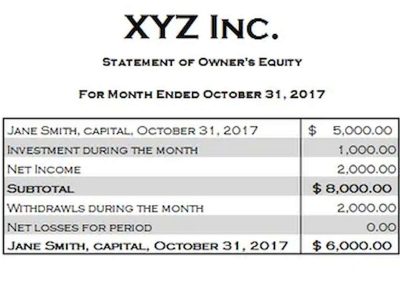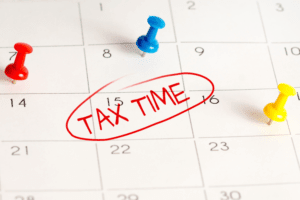Thomas J Catalano is a CFP and Registered Investment Adviser with the state of South Carolina, where he launched his own financial advisory firm in 2018. Thomas’ experience gives him expertise in a variety of areas including investments, retirement, insurance, and financial planning. It’s important to verify the credibility and reliability of the sources you use for Dow Jones Futures information. Relying on multiple reputable sources can provide a well-rounded perspective and enhance your understanding of the market dynamics surrounding Dow Jones Futures. Regularly review your trading performance and evaluate the effectiveness of your strategies. Analyze both winning and losing trades to identify patterns and areas for improvement and adapt your trading plan as needed.
Risk Management and Mitigation
The contract multiplier determines the dollar value of each point of price movement. The E-mini Dow multiplier is 5, meaning each Dow point is worth $5 per contract. The E-mini Nasdaq multiplier is 20, worth $20 per point, while the E-mini S&P 500 carries a 50 multiplier that’s worth $50 per point. If the Dow falls 100 points, then the buyer will lose about $500 while a short seller will gain around $500. A stock’s actual futures price will not always match its theoretical futures price because its fair value fluctuates at the direction of short-term supply and demand. When you see on a morning financial program that the DOW futures are up, you may be tempted to assume that means the market opening will be up as well.
What Are Mini-Sized Dow Options?
Buyers of futures contracts may sell their positions before expiration. American-style options give the holder the right, but not the obligation, to buy or sell the underlying asset any time before the expiration date of the contract. Index futures, which are also called stock or equity market index futures, work just like other futures contracts. They give investors the power and obligation to deliver the contract’s cash value based on an underlying index on a specified date at an agreed-upon price. Unless the contract is unwound before expiration through an offsetting trade, the trader is obligated to deliver the cash value on expiry. This differs from other types of futures, like those involving commodities, where a party might be obligated to hand over the underlying asset at expiry, not cash.
The Role of Fundamental Analysis in Dow Futures Trading
For example, if the DJIA closes at 16,000 at the end of September, the holder with a September futures contract one year earlier at 15,760 reaps a profit. Futures contracts don’t require the buyer to put up the entire value of the contract when entering a trade. Instead, buyers must keep just a fraction of the contract amount in their account.
How to invest in index funds
That means index funds outperform actively managed funds 53% of the time. You can make a large investment all at once, but most investment advisors recommend dollar cost averaging. Much like making regular payroll contributions into a retirement plan, you will set your fund allocations in https://www.broker-review.org/ your account and then add a fixed amount to the account regularly. This can often be done by setting up a direct deposit from your salary directly into the brokerage account. That strategy tends to work very well during times when the biggest components of the index are performing well.
Financial advisors consider index fund investing to be a reliable foundation in just about any portfolio. This is especially true for new and small investors or those who lack the time and inclination to engage in active do-it-yourself investing. The fund is set up to include positions in all the component companies within the index, frequently based on the market capitalization of the companies within it.
This refers to a common index fund management strategy known as market-cap weighting. It’s a strategy in which the fund holds positions in stocks within an index based on the total market value of their outstanding shares. This is very different from an index fund that might invest in the S&P 500 with equal positions in all 500 or so component companies. An index fund is a portfolio of stocks specifically designed to match the composition and performance of an underlying index. Indexes, like the S&P 500, Dow Jones Industrial Average and Nasdaq, are created by companies like Dow Jones, S&P Global and Nasdaq Inc. as a means of measuring the performance of the stock market.
Mutual funds usually set a minimum investment, which can be $1,000 or more. You’ll need to invest whatever the minimum established by the fund is. If you set percentage allocations, you can rebalance your portfolio each time one or more funds move well beyond your target allocations. That’s a simple process of selling shares in one fund and moving the money into a lower-performing fund. Next, you’ll need to choose the investment broker where you will buy and hold the funds.
- The process starts by deciding which index funds you want to invest in.
- Consider factors such as trading platforms, commission rates, margin requirements, customer support, and the broker’s overall reputation.
- The above cases cover many possible scenarios for changes for price-weighted indexes like the Dow or the Nikkei.
- It is also possible to partially close out of a position if you have more than one contract—for example, selling three of five contracts originally bought, leaving a position of two contracts open.
- Once you know your trading platform, select a trading strategy and test it using a demo or trade simulator account.
You may also want to supplement that with some sector funds if you believe certain industries are likely to outperform the S&P 500. You may decide to choose index funds based on industries like biotechnology, healthcare or energy. When you invest in index funds, it’s important to understand from the outset that the fund will neither outperform avatrade review or underperform. Once you buy into an index fund, you will have no management responsibilities. That means you will not need to research component companies or decide when to buy or sell shares. In today’s diverse investment environment, there’s an index fund for virtually every sector you can imagine and more being added all the time.
Major economic reports that confirm an existing trend generally result in a sympathetic move in futures and a similar move by the cash market at the open. This will likely hold through the close, as long as nothing occurs during the day to alter conditions. Similarly, major reports that indicate a strong change in conditions will usually cause a reversal in the futures market and a like move in the cash market. Also significant are announcements of gross domestic product, which are issued quarterly in two reports, advance and final. Once banks and brokers calculate interest costs and dividends, they establish a fair value number, such as plus 10, for example.
A profit is made on an E-mini Dow call option if the price of the underlying index moves above the strike price plus the price of the option. For example, if the option’s strike price is 26,000 and the option price is 800, the trader will be making money if the underlying index moves above 26,800. A person buying the underlying futures faces losses of $5 per point, which could amount to significantly more than the fixed loss of the option premium. A delta of -1 on a put option or +1 on a call option indicates that the option will move point-for-point with the underlying index. As the delta moves toward zero, even though the underlying futures contract moves $5 per point, the option contract may not.
And with index arbitrageurs on the sidelines until the U.S. stock market opens, nobody will counteract the buying pressure even if the futures price exceeds fair value. A futures contract is a legally binding agreement between two parties in which they agree to buy or sell an underlying asset at a predetermined price in the future. And the value of the underlying asset—in this case, the Dow—will usually change in the meantime, creating the opportunity for profits or losses. The most common way to invest in index funds is through investment brokers that offer them.
Futures traders have the advantage of a nearly 24-hour-long trading day and the ability to react quickly to news that happens when cash market participants’ hands are tied. However, most days don’t offer market-moving economic reports or random non-financial events that have effect on the market. E-mini futures contracts trade from Sunday evening through Friday afternoon in the United States. The S&P 500, Dow, and Nasdaq 100 futures contracts trade on the CME Globex system and are called E-mini contracts. Contracts are updated four times per year, with expiration taking place during the third month of each quarter. Many brokers offer demo trading accounts where you can practice trading Dow Futures with virtual money.
The Dow Jones is the stock market index; the Dow Jones Industrial Average (DJIA), which tracks 30 of the most prominent companies that trade on U.S. stock exchanges. Dow Jones futures are simply futures contracts that can be purchased to hedge or speculate against components in the DJIA. The futures are instruments derived from the index known as E-mini Dow futures. With futures trading, you can buy long or sell short with equal ease. Futures markets aren’t burdened with the same short-selling regulations as stock markets.
The person selling the future makes money if the index goes down, while the person buying the future makes money if it goes up. The futures buyer receives a deposit in his brokerage account of $650 from the seller. If instead of rising, the DJIA fell from 12,000 to 11,984, the futures buyer would settle the transaction by paying the futures seller $160. The E-mini Dow Jones Industrial Average Index tracks the Dow Jones Industrial Index (DJIA) futures.
Futures trade on exchanges and allow traders to lock in the prices of underlying assets named in the contracts. Both parties are aware of the expiration date and prices of these contracts, which are generally established upfront. It is important to understand the benefits and risks involved with E-mini Dow futures before placing a futures trade. With E-mini Dow futures you can trade nearly 24 hours a day during the trading week and take advantage of potential trading opportunities regardless of market direction. E-mini Dow futures also provide the ability to trade with greater leverage and can allow a more efficient use of trading capital. However, trading leveraged products like E-mini Dow futures is not suitable for all investors.
Investors follow the futures because it provides an indication of where stocks are headed at the opening bell. One of the most widely followed futures is the Dow Futures, whose underlying value is based on the Dow Jones Industrial Average, an index of 30 major U.S. companies. A futures contract allows a trader to speculate on a commodity’s price. If a trader buys a futures contract and the price rises above the original contract price at expiration, there is a profit. However, the trader could also lose if the commodity’s price was lower than the purchase price specified in the futures contract.
The underlying E-mini Dow is valued at one-fifth the value of the DJIA having a tick size of $5. Dow mini options are traded electronically through the Chicago Mercantile Exchange’s (CME) Globex system. Futures trading commonly refers to futures whose underlying assets are securities in the stock market. These contracts are based on the future value of an individual company’s shares or a stock market index like the S&P 500, Dow Jones Industrial Average, or Nasdaq. Futures trading on exchanges like the Chicago Mercantile Exchange can include underlying “assets” like physical commodities, bonds, or weather events.







